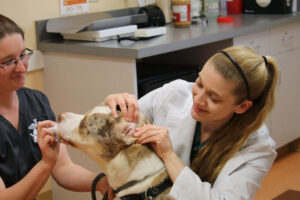By: Karel Minor, CEO/President of Humane Pennsylvania
I’m sure by now you are tired of having people tell you, as if you don’t know, what a tough year it’s been. So I’m not exactly going to do that. I think Humane Pennsylvania has been pretty lucky, or blessed, depending on your inclination.
So far we’ve only had a single employee test positive, although we fear a second is on the way, despite several quarantines based on government guidance due to emergent symptoms. That places our infection rate as a staff at less than half the 4%+ rate in Berks and Lancaster Counties, which I’ll chalk up to a very mindful staff in their personal lives and very rigorous safety protocols in their professional ones. And we are certainly grateful of our fortune given that our two counties have lost 1,130 lives to COVID so far.
We are equally grateful that we did not have to lay off a single employee from our staff during the economic hardship our community faced and is facing. Thanks to exceptionally good planning and financial management on the part of our finance team, the benefit of Federal pandemic funds, amazing generosity from our donors and supporters, and some dumb luck, we managed to respond to the expanded and unexpected needs of animals and people in our community by stepping up and expanding services, not standing down and cutting services. This wasn’t easy and we, like so many charities and businesses, are still going forward one day at a time under ever changing circumstances and restrictions. I honestly didn’t think we would have managed as well as we have, when all this started in March.
We kept taking animals in and adopting them out, with occasional pauses and slowdowns reflective of mandates and safety needs. We kept seeing clients at our two public hospitals, even though we had to facilitate it mostly through curbside. We kept up our audacious Healthy Pets Initiative in the City of Reading and adjacent municipalities, although greatly impacted by conditions. We had to cancel, postpone and change most of our fundraising activities and events, and while some were complete losses, some proved to be surprisingly successful as we learned how to cope with our new reality.
Moving forward we still expect at least three to six months minimum impact in 2021 before we can approach anything “normal”. We enter 2021 with a lot of trepidation. We don’t know if there will be additional Federal support of businesses, like the PPP loan to grant funding that literally kept us from laying off half our staff and closing some of our doors. But with recent history now to guide us, we keep an optimistic eye to the future, matched with careful planning and action, and organizational rigor. If you’ve ever read Jim Collins’ book, Good To Great, we are trying to embody the Stockdale Paradox. We are planning for the best but preparing for the worst. And if the best doesn’t come as soon as we’d like, we won’t lose hope. I hope you won’t either.
So, with a hopeful attitude, I’d like to give you a brief retrospective of 2020 with some of our notable accomplishments on the ground at Humane Pennsylvania, as well as our best guess of how we will be tackling an uncertain 2021….
The Reading Center for Animal Life-Saving: In 2019 we demolished our old shelter in Reading to create the next phase of our work on behalf of animals in Berks County. The new facility will be a combination adoption center and community veterinary center, built on the human wellness and urgent care model. It’s a groundbreaking new approach made possible thanks to a joint vision by our staff and board, and the financial generosity of the Giorgi Family Foundation. They kick started the expanded vision through a stunning grant to Humane Pennsylvania.

In March, all construction was halted by order of the Commonwealth. Although we were designated an “essential” operation, through some gap in logic the building which would support those operations was not. Ultimately, before we could figure how to appeal the no appeal designation, construction was allowed to begin again. Precious weeks lost turned into months of backups and delays. Fortunately, our amazing builder, Purcell Construction, got things back up and running. We expect to have full access to the new facility right after the New Year. It will still be three months or more before we can open to the public as we outfit the facility with veterinary and animal care equipment and get all the furniture in.
After that, we don’t even know when we will be allowed to open to full capacity (c’mon, vaccine, work your magic!). However, we fully expect that when the weather is warm again, we will be debuting the new animal welfare jewel of Reading and Berks County.
Animal Services: Despite the pandemic’s impact, we kept the doors open and took in homeless and stray animals as always, and adopted them out to loving forever homes. In fact, as I type this, we are in our 6th day of our 12 Days of Adoptions promotion, and we’ve already adopted out every dog we have (!) and are trying to empty the entire shelter of every dog, cat, and critter by Christmas! Our adopters have been great as we’ve had to shift between models, changing from phone adoptions and direct delivery, to outside, appointment only adoptions, open door, socially distant adoptions, and back. Sometimes in the same week.
Vet services have only been able to operate at an 80% level, due to curbside services required by the state vet board and our sanitation protocols. That’s still a lot of animals being helped, but we’d really like to return to our full capability. We’ve also been able to continue our community vaccine and microchip clinics in Lancaster and Berks Counties, although these are also much harder to manage and dramatically reduce our targets. All these services are designed around direct and close contact with pets and their people.
 Maybe the program which succeeded beyond our expectations was the COVID response pet food distribution facilitated through Spike’s Pet Pantry. The PA State Animal Response Team and Berks EMA activated the Berks County Animal Response Team, which is directed by Humane Pennsylvania, and asked us to be the lead agency in charge of coordinating emergency food distribution for Eastern PA. We had a plan in place, we had the capacity built as part of the Giorgi Family Foundation grant, and we were willing. Whether we would be able was the question. Thanks to the hard work of our amazing staff and volunteers we were able to receive and distribute over 300,000 pounds, about 1.2 million pet meals, since March, plus tons of needed supplies.
Maybe the program which succeeded beyond our expectations was the COVID response pet food distribution facilitated through Spike’s Pet Pantry. The PA State Animal Response Team and Berks EMA activated the Berks County Animal Response Team, which is directed by Humane Pennsylvania, and asked us to be the lead agency in charge of coordinating emergency food distribution for Eastern PA. We had a plan in place, we had the capacity built as part of the Giorgi Family Foundation grant, and we were willing. Whether we would be able was the question. Thanks to the hard work of our amazing staff and volunteers we were able to receive and distribute over 300,000 pounds, about 1.2 million pet meals, since March, plus tons of needed supplies.
From the farthest north to farthest west counties in our Commonwealth, Humane Pennsylvania delivered or distributed pet food to dozens of organizations, school districts, and food pantries, which in turn shared with countless more. Our Spike’s Pet Pantry quickly went from being a small local effort serving hundreds to a regional program serving thousands, perhaps tens of thousands. Organizational capacity and our work to build it made the difference. It has been gratifying to help so many animals and people, but to also have our plan and execution of a bold model proven effective.
These are just a few of the bigger happenings from this past year. There have been so many more, too numerous to list, big and small, worth mentioning. Fundamentally, they all stem from the hard work and dedication of our staff and volunteers, and the generosity of our donors. It because of this that I have undaunted optimism for what is to come in 2021.
We know that by hook or by crook the new Center for Animal Lifesaving will open to the public. We are also pretty hopeful that we can get back on track with our paused capital campaign with a goal of ending the year with the entire building paid off in just three years. Did I hear you wonder aloud how you can help? Well, for less than a cheap cup of coffee (92 cents a day) you can join Spike’s 700 Club, a special giving club limited to just 700 members, or be one of the 200 Tilly’s 200 Club members ($1.83 a day). If we filled just these 900 donation spots, we’d complete our campaign once and for all! Join me as a founding member!
We are expecting to be able to ramp up our Healthy Pets Initiative program services to make up for lost time and get thousands more animals’ sterilized, vaccinated, and microchipped, in both counties! And we really look forward to throwing the doors wide open for full adoption services and veterinary services again the moment we are allowed to and can do so safely.
Our success bringing over a million pet meals to hungry animals has inspired us not to lower our expectations in the future. Keep an eye out, we will have a big, furry, audacious plan to share within the coming year, and we are going to need your help.
We really can’t wait to get back to our normal events and fundraising model. The cancelled Pints for Pups, the virtual Walk for the Animals, and the virtual Art for Arf’s Sake Art Auction ranged from a total loss (Pints) to a surprisingly successful 60% of target for the Art Auction (a big shout out to our amazing volunteer Art Auction committee and Lauren Henderson and Chelsea Cappellano in our Advancement department for swinging that minor miracle). Even with their success, we came out literally hundreds of thousands of dollars under between lost event and operations revenue. We can continue on that trend. Fortunately, we don’t think we will.
In 2021 we have flipped the Art for Arf’s Sake Auction permanently to November, which seems like a safe bet at this point for an indoor event, and the return of the MEGA-Pints for Pups will be in mid-summer, which seems like a pretty good bet for an outdoor event.
We’ve also flipped the Walk to permanently be a spring event, currently scheduled for May, 2021. However, if there are any outdoor gathering restrictions still in place in May, a September live Walk is still in the cards. Keep up to date and please sign up for the Walk for the Animals like the world is getting back to normal, because we think it will!
I cannot thank you enough for working your way through 1,800 words and for sticking by Humane Pennsylvania and the work we do on your behalf, even during troubling times. I hope you and your family have been safe and will remain safe. I cannot wait until we can see each other in person again. I hope next year we don’t have to talk about what we’ve overcome, but instead can share what we’ve accomplished together to build the best community anywhere to be an animal or an animal caretaker.
Have a Merry Christmas, Happy Holidays, and a happy and healthy New Year from everyone at Humane Pennsylvania.


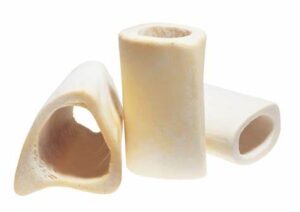 Red Barn Bones: These bones are great for enrichment! If you have a dog who really enjoys peanut butter or cream cheese, these bones are the perfect gift! They come in different flavors and sizes but they also have hallow ones that you can fill with whatever you want. Red Barn Bones are also nice because you can freeze them and they’ll last a little longer.
Red Barn Bones: These bones are great for enrichment! If you have a dog who really enjoys peanut butter or cream cheese, these bones are the perfect gift! They come in different flavors and sizes but they also have hallow ones that you can fill with whatever you want. Red Barn Bones are also nice because you can freeze them and they’ll last a little longer.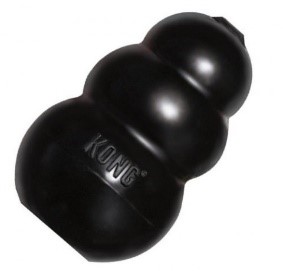
 better. There are tons of beds to choose from and some stores let your pet test them out first.
better. There are tons of beds to choose from and some stores let your pet test them out first. are not easily digested by dogs. Along with them being hard, they also tend to break off in sharp shards. These shards can be very dangerous for dogs especially when trying to be digested.
are not easily digested by dogs. Along with them being hard, they also tend to break off in sharp shards. These shards can be very dangerous for dogs especially when trying to be digested.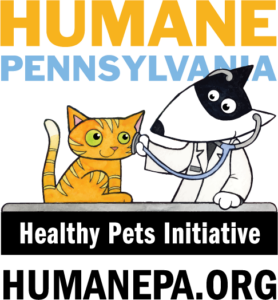
 allowed pets where they were going. Before we continue, let’s pause to talk about what I am sure many are currently thinking, “How can anyone surrender their 19 year old pet to a shelter? I could NEVER do that to my pet let alone a senior. They must not have cared about her or they would have figured out a way to keep their pet.” For those of you who were not thinking those things, good for you. Thank you for not casting judgement to someone whose story you know nothing about. For those who thought those exact same things, trust me, this does not make you a bad person. However, I think it is important to explain why I encourage you to adjust your thinking.
allowed pets where they were going. Before we continue, let’s pause to talk about what I am sure many are currently thinking, “How can anyone surrender their 19 year old pet to a shelter? I could NEVER do that to my pet let alone a senior. They must not have cared about her or they would have figured out a way to keep their pet.” For those of you who were not thinking those things, good for you. Thank you for not casting judgement to someone whose story you know nothing about. For those who thought those exact same things, trust me, this does not make you a bad person. However, I think it is important to explain why I encourage you to adjust your thinking. We decided that while she had the name of Fluffy for 19 years, a new chapter deserved a new name and after realizing she didn’t respond to Fluffy anyway, possibly from being hard of hearing, we gave her the new name of Cleocatra. Her name came from her stunning grey eyes, smoky colored long fur, and regal presence. She owned any room she was in. This queen joined our family existing of a small dog and two other cats. After a small acclimation period she quickly took charge. It was as if the other animals knew her age was significant to theirs and gave her the respect and hierarchy she deserved. She was the first to eat and when she wanted ear rubs, she was first in line to receive ear rubs.
We decided that while she had the name of Fluffy for 19 years, a new chapter deserved a new name and after realizing she didn’t respond to Fluffy anyway, possibly from being hard of hearing, we gave her the new name of Cleocatra. Her name came from her stunning grey eyes, smoky colored long fur, and regal presence. She owned any room she was in. This queen joined our family existing of a small dog and two other cats. After a small acclimation period she quickly took charge. It was as if the other animals knew her age was significant to theirs and gave her the respect and hierarchy she deserved. She was the first to eat and when she wanted ear rubs, she was first in line to receive ear rubs.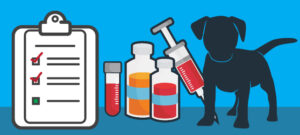
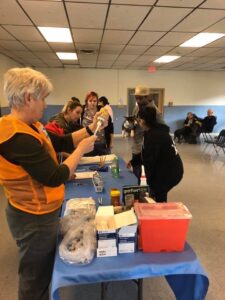
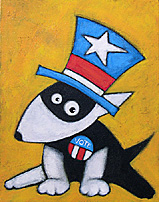 umane Pennsylvania knows that every elected official and every candidate is a potential ally on issues important to our work. That’s why we engage with all of them, regardless of policy affiliation. It turns out donkeys, elephants, and greens all have cats and dogs at home. If ever there was a constituency that crosses party lines, it’s the animals who share our lives. That’s why we have the support of elected officials of all stripes and parties.
umane Pennsylvania knows that every elected official and every candidate is a potential ally on issues important to our work. That’s why we engage with all of them, regardless of policy affiliation. It turns out donkeys, elephants, and greens all have cats and dogs at home. If ever there was a constituency that crosses party lines, it’s the animals who share our lives. That’s why we have the support of elected officials of all stripes and parties. more towards team building. One activity that I facilitated at one of our staff enrichment days, was called “Minefield”. This activity involved a minefield of different objects. We used safety cones, frisbees, crates and anything to create an obstacle. From there I split the group in two and handed each group a blind fold. The objective was to get everyone through the minefield blind folded. The teams could decide to all work together, pair up within the group or potentially have one person lead everyone through the minefield. As a facilitator, I had to change up the course as they were going through and I also noticed that one person from each group stepped up to lead everyone through. So in order to get more involvement within the group I told the ‘leaders’ that they had to remain quiet for a little to encourage other people to step up to guide other people through. Everyone made it through the minefield unscathed.
more towards team building. One activity that I facilitated at one of our staff enrichment days, was called “Minefield”. This activity involved a minefield of different objects. We used safety cones, frisbees, crates and anything to create an obstacle. From there I split the group in two and handed each group a blind fold. The objective was to get everyone through the minefield blind folded. The teams could decide to all work together, pair up within the group or potentially have one person lead everyone through the minefield. As a facilitator, I had to change up the course as they were going through and I also noticed that one person from each group stepped up to lead everyone through. So in order to get more involvement within the group I told the ‘leaders’ that they had to remain quiet for a little to encourage other people to step up to guide other people through. Everyone made it through the minefield unscathed.